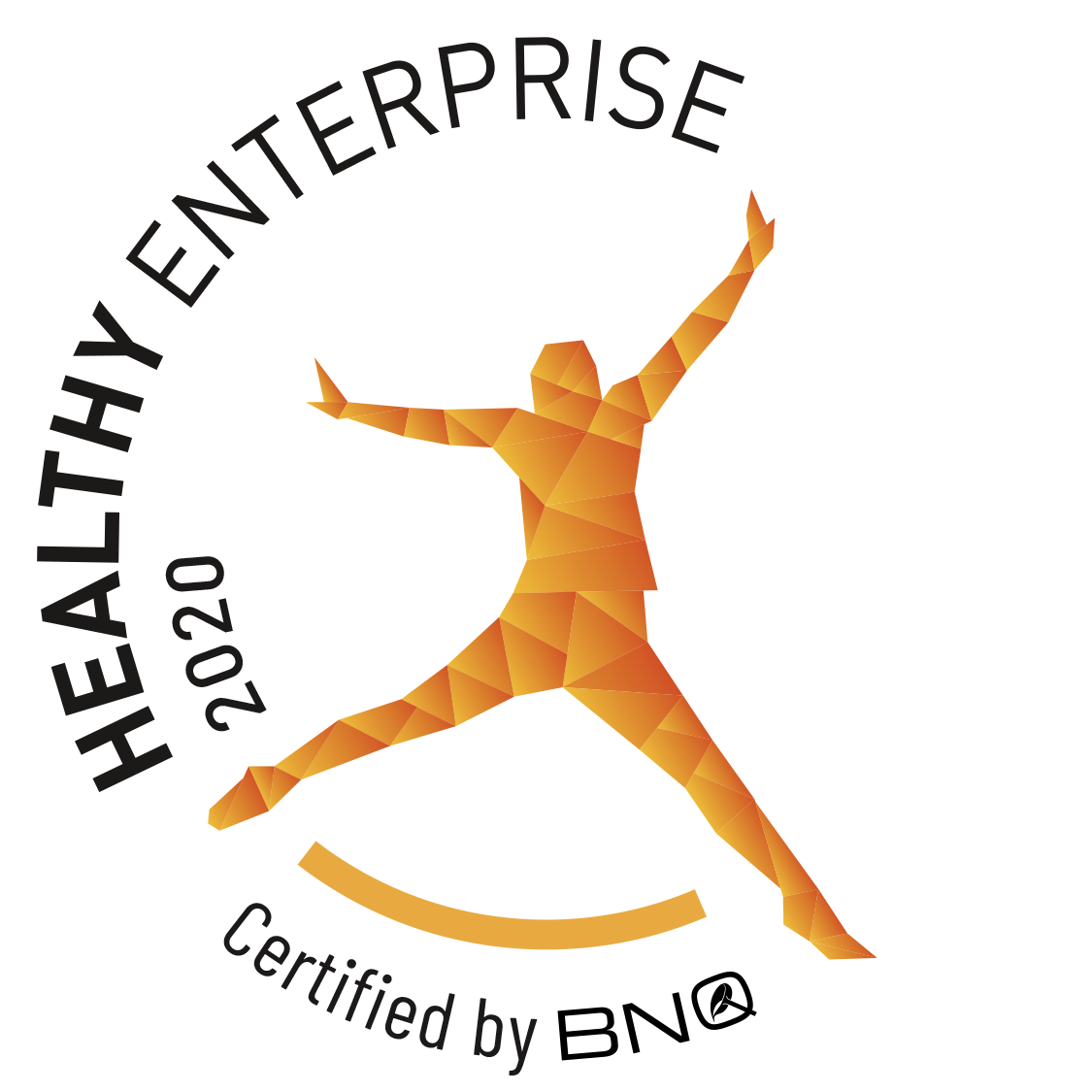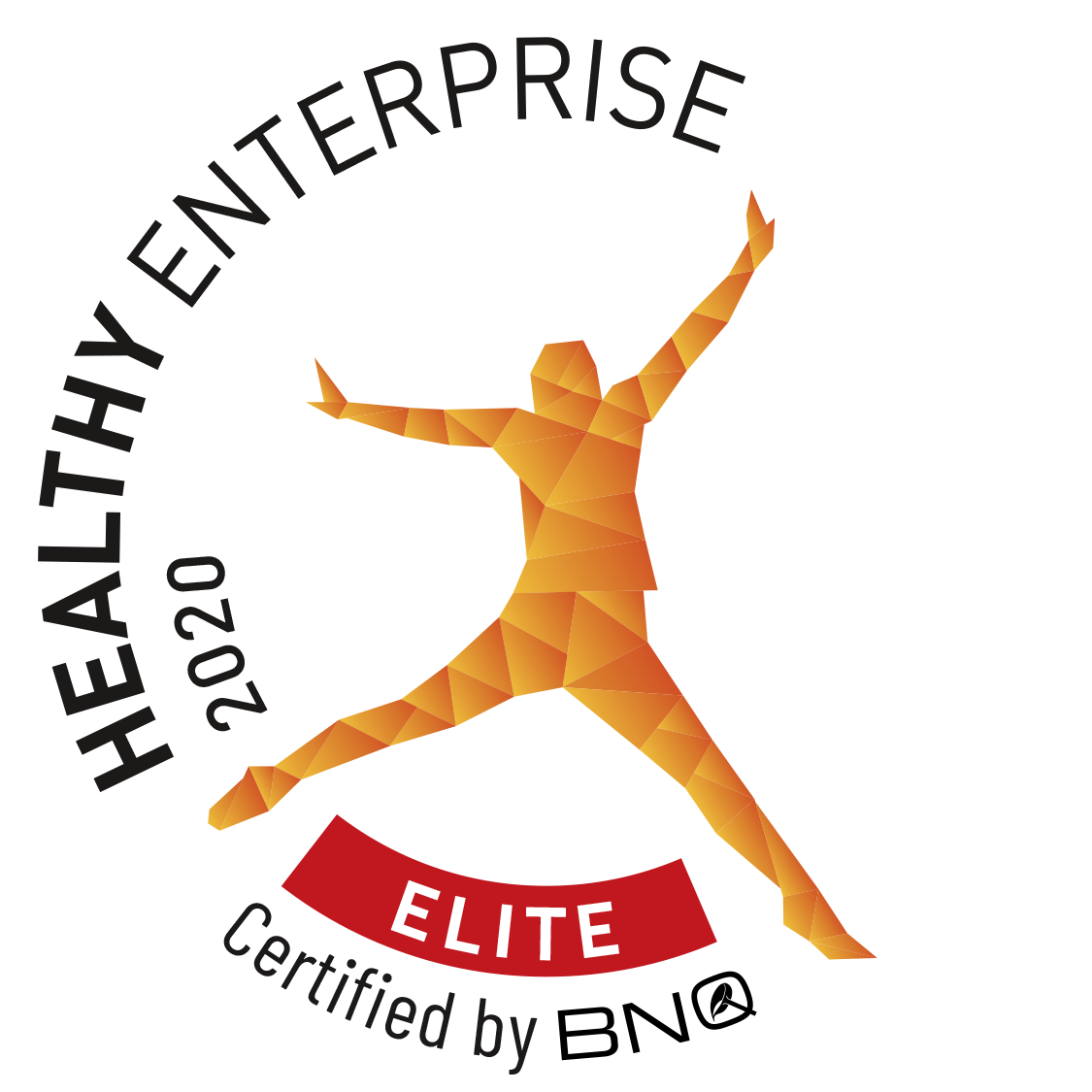
Standard CAN/BNQ 9700-800
Healthy Enterprise — Prevention, Promotion and Organizational Practices Contributing to Health and Wellness in the Workplace
With employee health, both physical and psychological, representing a global issue of paramount importance now more than ever, the Canadian Healthy Enterprise standard has become a pioneer. It is the first to offer employers a preventative approach that is positive and pragmatic aiming to create and maintain workplaces that contribute to the health and wellness of their employees. This standard is designed for any business or organization, regardless of its type, size, or activities.
In addition to encouraging the recruitment and retention of the best talent, good practices detailed in the Healthy Enterprise standard support sustainable improvements in the health of individuals, increase productivity, and confer a significant financial advantage to the enterprise, especially in terms of reducing costs related to absenteeism and disability.
To implement a plan of action that will meet your employees’ physical and psychological health needs and concerns, the standard proposes employee data collection in four areas of activity that are recognized as having a positive impact on health and wellness in the workplace. This information will then enable their needs to be established and prioritized in order to target the interventions and practices to be put in place.
Work-life balance
Practices associated with this area of activity promote a better balance between the demands of one’s working life and those of one’s personal life. These practices can include flexible working hours, an hour bank, and teleworking, among others.
Management practices
Healthy practices related to work organization and social relationships include those that promote a fair workload distribution, recognize individual and team effort, and encourage information sharing between employees and managers, for example.
Work environment
These practices, which aim to maintain a safe and agreeable workplace, cover, among others, workstation ergonomics, sanitary conditions, noise levels, and adequate access to protective equipment.
Lifestyle habits
Interventions in this area target any individual behaviour or regular activity of a person that affects his or her health. They encourage the adoption or continuity of healthy lifestyles, especially in relation to stress management, nutrition, physical activity, and sleep.
The Healthy Enterprise standard, an initiative of The Healthy Enterprises Group and developed by the Bureau de normalisation du Québec, was revised and published in February 2020.
-
Download standard
12823 FRN CAN/BNQ 9700-800 Entreprise en santé - Prévention, promotion et pratiques organisationnelles favorables à la santé et au mieux-être en milieu de travail Cette première édition de la norme nationale du Canada CAN/BNQ 9700-800 remplace la norme BNQ 9700-800, qui a été archivée. Version Language Publication date Edition Updated on No. of pages Price 9700-800 9700-800:PDF PDF French 2020-02-13 1 45 Free 12824 ANG CAN/BNQ 9700-800 Healthy Enterprise - Prevention, Promotion and Organizational Practices Contributing to Health and Wellness in the Workplace This first edition of the National Standard of Canada CAN/BNQ 9700-800 supersedes the standard BNQ 9700-800, which is now withdrawn. Version Language Publication date Edition Updated on No. of pages Price 9700-800 9700-800A:PDF PDF English 2020-02-13 1 45 Free
-
Standards committee members
Number of committee members : 10
Ms. Katy Boucher Medial Services SST Ms. Myriam Dufour Ministère de la Santé et des Services sociaux (MSSS) Ms. Emmanuelle Gaudette Pratt & Whitney Canada Ms. Marie-Kristine Hamel Gendarmerie royale du Canada Ms. Samia Jarjoura La Compagnie d'Assurance du Canada sur la vie (Canada Vie) Ms. Annie Jean Mouvement Desjardins Doctor Mario Messier Groupe entreprises en santé Ms. Nektaria Nicolakakis Institut national de santé publique du Québec (INSPQ) Mr. Jean-Pier Rodrigue Consultant Ms. Édith Tremblay-Dubé Institut de recherche Robert-Sauvé en santé et en sécurité du travail (IRSST) -
Information Documents
- Deux normes complémentaires pour la santé et le mieux-être du personnel (French only)
- The Healthy Enterprise Standard at a Glance
- Occupational health and wellness – Standards and certification programs (French only)
- Questions and Answers Document (French only)
- Additional tools (upon request only):
- recording of the information meeting (video - French only) ;
- presentation of the information meeting (PDF - French only);
- self-assessment form (Excel - Available in English version);
- instructions on how to use the self-assessment form (video - French only).
Certification Offer
Healthy Enterprise certification is a pledge of the priority you accord to the health and wellness of your workforce, and also of your desire to act in a socially responsible way. It inspires pride and confidence in your employees, your clients, and your community.
A progressive implementation of the best practices in health and wellness in the workplace is facilitated by the offer of three levels of certification. These correspond to the three levels of commitment of the enterprise, as presented in the standard.


Healthy Enterprise:
The enterprise collects data to understand the health and wellness needs of the employees, and establishes a structured action plan, preparing and organizing interventions related to at least one identified priority need. This clearly demonstrates the enterprise’s commitment to the health and wellness of its employees and all of its stakeholders.
Healthy Enterprise – Elite:
The enterprise collects more data to determine the needs of the employees, and puts in place interventions related to at least two priority needs, of which at least one intervention falls under management practices. The enterprise goes a step further to integrate health into its organization, especially in including prevention, promotion, and organizational practices contributing to health in its strategic planning, and in defining the responsibility of its managers in relation to health.
Health and wellness are better integrated into management processes, and this further enhances wellness and the balance between the individual and his or her work environment.
Healthy Enterprise – Elite+:
Data collection is greater and aims to measure the changes in health and wellness indicators over time to better target priority needs. The interventions are related to at least three priority needs, of which at least two interventions fall under management practices. Managers become more involved in the approach as the enterprise establishes for them a development plan for prevention, promotion, and organizational practices contributing to health and wellness, and evaluates it according to an established objective and employee satisfaction.
At this level, the enterprise gains an in-depth understanding of its situation and the long-term benefits it seeks, develops and implements more specific interventions, and aims to develop a sustainable health and wellness culture.
- Download documents required for certification
-
Certified businesses (CAN/BNQ 9700-800/2020)
Total number :38

-
Program development committee members
Number of committee members : 7
Ms. Katy Boucher Medial Services SST Mr. Christian Doré Ministère de la Santé et des Services sociaux (MSSS) Ms. Marie-Michèle Mantha-Bélisle Institut national de santé publique du Québec (INSPQ) Doctor Mario Messier Groupe entreprises en santé Ms. Michèle Parent HUB International Québec Limitée Mr. Jean-Pier Rodrigue Consultant Mr. François Viens Gendarmerie royale du Canada -
Webinars (French only)
- 2021-09-15 Séance d’information : Norme et programme de certification Entreprise en santé
Webinaire
Présentation (PDF)- 2021-10-21 Normes et certifications pour favoriser la santé et le mieux-être au travail
Webinaire
Présentation (PDF) - 2021-09-15 Séance d’information : Norme et programme de certification Entreprise en santé
- Partners (French only)
-
Contact
Isabelle DeSurmont
Bureau de normalisation du Québec
Cell.: 418-455-8644This email address is being protected from spambots. You need JavaScript enabled to view it.










